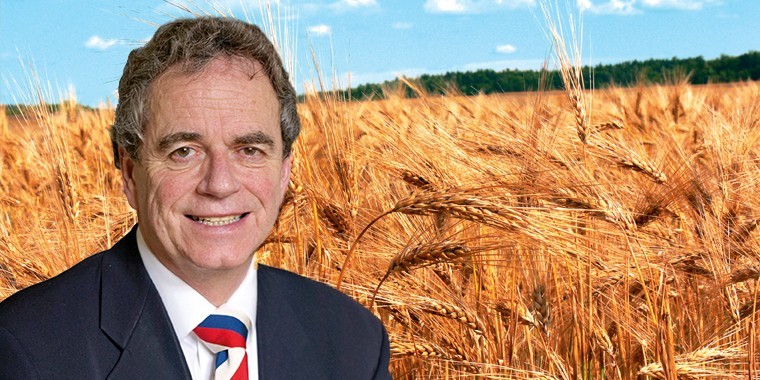Writing this on the 23 April, we now have perfect spring weather at last. Since Easter, above average temperatures and hours of sunlight have warmed and dried out the good malting barley land in Hampshire and Wiltshire.
Many barley crops planted in the last two weeks are now up and look OK. Unfortunately, it’s a month too late: sure, seed rates have been increased and nitrogen applications reduced, but it really is going to need near perfect growing conditions from now on to bring this spring malting barley crop safely to harvest.
There is already talk of reduced yields, higher nitrogen and thinner barley corns. All of that is possible of course. But one thing is for sure – it won’t be an early harvest for spring barley, or if it is, it will mean that we have some very hot and unwelcome weather to come.
I think some heavy land to the West and North will not be planted at all and leaving it fallow is an option that some will take. Certainly the idea a 7% increase in spring barley plantings needs to be revised.
France eventually completed its spring plantings, but with only 15% seeded in the optimum time and 75% later than that. Denmark started at its usual time in April, and is progressing well – so much so that its farmers and coops are happy to be selling new crop at a five euro discount to the UK.
On a note of caution, Russia has only planted 15% of its spring barley: normally it’s 65% seeded at this stage. Old crop feed barley is very firm but Denmark has continued to sell old crop malting down to within a few euros of export feed barley in the UK. Right now on old and new crop, maltsters and brewers are showing no interest in buying malting barley or malt. I think that is a mistake as I cannot see UK export malting barley being cheaper than it is now for either old or new crop. Also sterling is strong, for now, which again helps the export buyer.
UK wheat supply remains tight, but in some areas feed barley is now trading at a premium – as it has been for some time – in the Black Sea area. The 2018 winter wheat crop has come through the winter well and is now starting to look good as farmers are now able to get on spraying and fertilising. But, it’s difficult to predict a much larger surplus than last year, so the UK may again enjoy trading wheat at import rather than export parity.
The potential trade war between the United States and China rumbles on in the background. There are critical meetings being held between 4 and 22 May with any change to tariffs happening in June. With a trade deficit of some 375 billion dollars, you can appreciate why the US wants to impose a 25% import tariff on Chinese imports. Soya is a big concern for China: it’s the biggest importer in the world. If its 97 million metric tonnes do not come from the US, it’s difficult to see how Argentina and Brazil will be able to make up this difference.
So despite the weather issue in the US in the wheat prairies and the concerns about soya and maize in South America, there is still no real story on new crop. With this in mind, I want to reappraise the old stock market adage of sell in May and go away. Taking old crop feed barley first; the values are at record levels still in most areas. It can only go one way from here – down! Within the next two weeks there will be some winter barley somewhere out in ear. Then someone will reiterate that it’s only six weeks from ear to shear. This usually destabilises even the strongest old crop barley market. In fact, in France they will have winter barley combined by the end of June. This is giving European Union maltsters cheap cover compared to spring values, so sell old crop feed barley.
Wheat has longer to run than barley. Even in the big deficit areas of the North and Borders, the cheapest imported wheat cannot at the moment undercut UK prices, especially when it has to be discharged at port, and then moved to an inland mill. So keeping wheat until June or later should be OK.
Oilseed rape still needs help from weaker sterling or new demand as the crushers get through their third party stores. But still, I would hold through May: everything else has had an upturn in price except rape. Neither would I be tempted to sell new crop.
With the weather being so unpredictable now, I cannot believe that we won’t see a spike in new crop prices at some stage. But that should not stop you selling one third of wheat forward – at say £140. While I would not sell fixed price malting barley, the forward feed base prices are so good that I would suggest committing malting barley with a fixed base feed price, plus malting premium applicable at the time when you know you have the quality.




